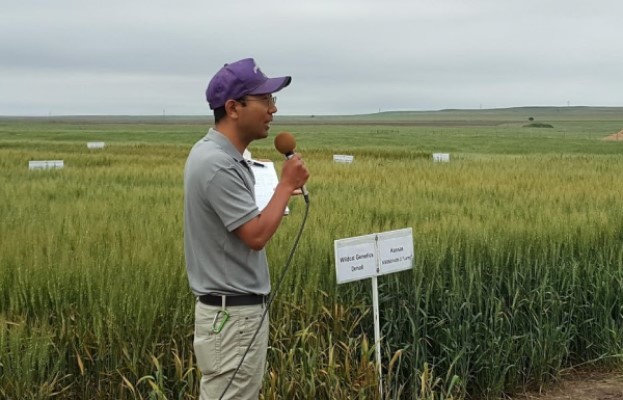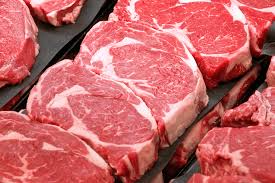Variable Kansas wheat performance prompted by adverse weather

The Kansas Agricultural Experiment Station annually examines the performance of different types of wheat in multiple locations across the state to assist producers in selecting the variety best suited for their region.
According to K-State crop performance test coordinator Jane Lingenfelser, some locations performed well, while irregular weather patterns troubled wheat production in other areas.
“It was common to have 20 bushel per acre fields just a few miles or maybe even across the road from 80 bushel or more fields,” said Lingenfelser, who is an assistant agronomist in Kansas State University’s Department of Agronomy. “Even so, average yield for the state was estimated at 43 bushels, up 8 (bushels) from last year.”
For most Kansans, the 2023-2024 growing season started off promising, Lingenfelser said, noting that favorable conditions led to an early growth in biomass within fields.
“Except for the test sites around Hays and the far northwest portion of the state, rainfall coupled with widespread early planting resulted in the best-looking fall emerged wheat crop in the last four years,” she said.
“Some wheat fields showed as much as 2,000 pounds of dry matter per acre in late November, which is about four times the usual amount.”
This abnormal amount of dry matter resulted in healthy wheat stands for winter but also inflated the crop’s water demand – a consequence intensified by other factors.
“We have had La Nina weather patterns the last three years, which made the wheat crop primarily dependent on in-season rains,” Lingenfelser said. “Luckily, they came during September through November, which was conducive to that biomass production.”
Lingenfelser said that frigid January temperatures put areas of Kansas at risk for severe winterkill, but simultaneous snowfall saved most fields from failure.
“There was an entire week when temperatures dropped near negative 20 degrees (Fahrenheit),” she said. “Without the 10 inches of snow that accompanied the cold snap, there would have been no protection from those extreme temperatures.”
Despite a wet winter, central and western Kansas entered a drought period – hindering performance and other aspects of crop production.
“Growers were applying nitrogen and sulfur fertilizer during that time of the year, which requires a lot of moisture to leach down into the root zone,” Lingenfelser said. “The crop was also vulnerable to spring freeze damage since dry soils do not have the same buffer against temperature changes as wet soils.”
Growers experienced more out of the ordinary temperatures during late spring. Lingenfelser said these conditions also took their toll on the crop’s performance.
“During the last week of March, temperatures dropped below 24 degrees (Fahrenheit). The wheat crop was past the jointing stages in parts of south-central and southwest Kansas and resulted in winterkill (which) reduced the yield potential of the crop overall,” she said.
Besides the weather, Lingenfelser said pressure from such diseases as wheat streak mosaic virus and pests (including wheat curl mites) also influenced the success of certain fields.
A complete list of results from the 2023-2024 Kansas Wheat Performance Tests is available online from the K-State Department of Agronomy.









